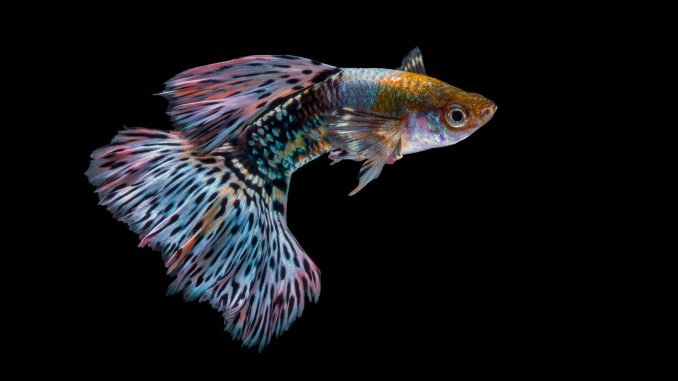
Guppy Grass is lush vegetation that adds health and beauty to a community tank. It’s versatile, too, as you can either plant it or choose to float it. Either way, it will be a benefit to your aquatic friends and improve the curb appeal of your aquarium.
Guppy Grass is easy to grow (well, sometimes a little too easy!) and it helps clean your water. Fish and small invertebrates will grab on and hang out, or use it as a spawning area. It also provides plentiful hiding places and is a source of food.
As long as you can control the fast and furious growth of this aquatic freshwater plant, you’ll be grateful you have it in your tank. We’ll cover all the important facts about Guppy Grass, including how to plant and care for them, the benefits of Guppy Grass, and how to prevent it from growing out of control and melting.
TABLE OF CONTENTS
Guppy Grass Facts & Overview
| Category | Rating |
| Care Level: | Easy |
| Propagation: | Clippings, side shoots |
| Color Form: | Green |
| Temperature: | 50 – 86°F |
| Size: | Over 36 inches |
| Fertilizer: | Liquid |
| Family: | Hydrocharitaceae |
| Minimum Tank Size: | 15 gallons |
| Tank Set-Up: | Freshwater |
| Placement: | Floating, planted, or weighed down with plant weights |
Also known as najas grass or common water nymph, Guppy grass, (scientific name Najas guadalupensis) remains one of the most popular aquatic plants. A fast-growing plant, it is suitable for all aquarium hobbyists, from the novice to the advanced.
Some beginning hobbyists may say, “You had me at ‘easy to grow’,” but that is merely one of the benefits of these green powerhouses–they also remove toxins and impurities from the water while at the same time creating oxygen.
Just like Spider Plants and Crysthanseums clean the air in your home, Guppy Grass cleans the conditions in the water. The genus Najas, to which Guppy Grass belongs, is comprised of water nymphs (a.k.a. naiads), a group of approximately 40 aquatic plants that were first described in 1753. You can see that Guppy Grass’ other monikers come from their genus (Najas) and the type of plant (water nymphs).
Formerly classified in the Najadaceae family, they were reclassified in 2003 and are now in the family Hydrocharitaceae. Its common name of Guppy Grass might make you think that it is only a suitable plant for guppies, but it is much more versatile than that, providing shelter, nutrition, and spawning quarters for small fish, fry, and small invertebrates.
Naja grass is a robust plant, and because of that, is also a forgiving plant for novice aquarium hobbyists, as it absorbs errors a beginner might make with water conditions, protecting the water integrity in your aquarium and promoting wellness for your community.
If you add too much to your tank, forget to change the water, or neglect to add a water conditioner, the Guppy Grass has your back. It absorbs so much gunk from the aquarium tank that you won’t see much algae growth at all. A good thing, but if you have plecos, livebearers, and certain shrimp and snails that feast on algae, you might need to supplement their diets with algae wafers.
The one thing you want to watch out for is how quickly this hardy plant grows–if you don’t pay attention, it could take over your tank.
Habitat of Guppy Grass
Considered an invasive species in many areas, Naja grass is a North American native that is also found in South America, Asia, and the Middle East.
It is not picky about what type of water it likes, and in the wild, you can find it in both still and fast-moving waters, and in fresh and brackish waters.
Whether it’s a lake, stream, pond, ditch, waterway, or canal, you’re likely to find Guppy Grass. Take a look the next time you’re on a walk or bike ride.
Benefits of Guppy Grass
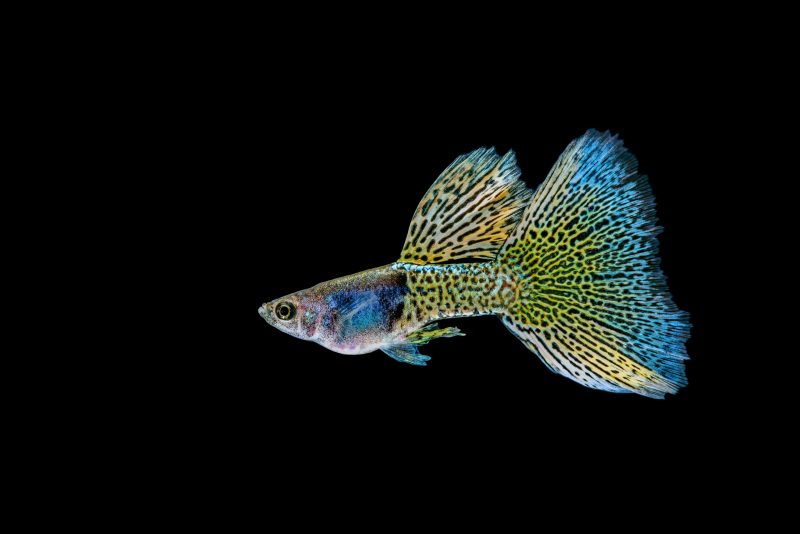
Naja grass absorbs ammonia, metals, nitrates, nitrites, and toxins from the aquarium water, so it is a real help in the hobbyist’s eternal quest for a pristine tank. If you’ve read my articles before, you know how much I advocate for a clean tank because it promotes not just health but wellness.
Not only will a clean tank protect your aquatic inhabitants from disease, but it also decreases their daily stress. Stress-free fish and invertebrates are happier, live longer, get along better with others, and display more vibrant colors. Since you can encourage this overall wellness with a common plant that is easy to grow, there’s no reason not to add some Guppy Grass to your aquarium.
And again, it’s not just guppies that benefit from Guppy Grass. Small fish like danios, rainbowfish, and tetras love to use najas grass as a spawning mop. New fry is protected under the cover of the Guppy Grass and also use it as a nutrient source (they snack on infusoria that attaches to the grass). And shrimp will also dine on the microscopic food they find on the najas grass and appreciate the hiding places it provides.
Here’s an alphabetical list of the main benefits of najas grass:
- Absent Algae: By absorbing nutrients, Guppy Grass does not leave enough for algae to grow, reducing a lot of cleaning you would need to otherwise do.
- Appealing Aesthetic: Guppy Grass creates a lush look for your aquarium and really completes the visual appeal of your community aquarium.
- Food fount: Guppy Grass is a great source of nutrition. Herbivores and omnivores will snack on the plant itself, and other aquarium inhabitants, including fry, will snack on the microorganisms that they find on the leaves of the Guppy Grass.
- Hiding Havens: So many of our fish and aquatic friends rely on good places to hide, and Guppy Grass fits the bill, providing safety and comfort.
- Oh oh Oxygen: The production of oxygen in your tank increases the health and well-being of the whole community.
- Water Washing: Guppy grass removes toxins, metals, nitrates, and nitrites from the water, ensuring the water quality of your aquarium.
- Spawning Site: Egg scatterers, Livebearers, and shrimp rely on Guppy Grass as a spawning mop, and newly hatched fry are protected from predators
Appearance
The stems of Guppy Grass are long and slender with numerous branches. The leaves are also thin; they are flexible and green, arranged in whorls on the stem.
If you look closely, you can see that the leaves have tiny unicellular teeth.
Naja grass can reach a maximum height of about 3 feet (.91 m). Because it is a submerged plant, you will want to make sure your tank is tall enough to accommodate its growth. The leaves are 1.2 inches (3 cm) long and .04-.08 inches (1-2 mm) wide.
You will also notice the small flowers and white roots of Guppy Grass.
Habitat and Tank Conditions
As we mentioned, Guppy grass grows with little effort, so you don’t need to add CO2, soil, or fertilizers, although you can use liquid fertilizer if you have soft water. Also, because they are accustomed to growing easily in a variety of water conditions, you can usually choose whatever temperature and flow are best for your aquatic pets.
A substrate is not necessary for growing Guppy Grass if you are floating it. If you are planting najas grass, you will need some type of substrate, but what you choose will depend more on the type of fish that you are keeping.
For example, if you have bottom feeders like catfish, you want to choose smooth sand as gravel could harm their underbelly. Guppy grass is not picky about the substrate because it is not really getting nutrients from the substrate; the substrate is just anchoring the plant.
In terms of lighting, Guppy Grass grows best in low to medium conditions. If the light is too low, your plants will not be as green. If the light level is too high, you run the risk of burning the Guppy Grass, and the plant’s color will turn reddish rather than green.
When you are growing and caring for Guppy Grass, it is important to be aware of the lighting conditions of any other aquatic plants that you may be housing in your tank. If the Guppy Grass is not pruned and clipped regularly, the dense plant may block the light source from reaching your other plants, robbing them of vital nutrients and choking them.
As with any inhabitant of a community tank, it is vital to look at the needs and well-being of the whole community.
Tank Size
Guppy Grass can survive in very small tanks; in fact, a nano tank would even work, but it’s recommendable to get a larger tank due to its rapid growth. If you use a nano tank, it’s likely to outgrow the tank really quickly. We recommend a 15-gallon tank at the minimum.
Keep in mind that the tank size you need will really depend on how many fish and others are in your community aquarium.
Water Conditions
As we mentioned before, Guppy Grass is a robust aquatic plant that can be found in myriad water conditions, still or fast-moving, freshwater or brackish, cool, and warm.
The optimal parameters to ensure a close match to their natural habitat are:
- pH levels: 6.0 to 8.0 (around 7.0 is best)
- Water hardness: 5 to 12 dKH
- Water temperature: 68°F to 79°F (20-26.1°C)
Water flow should be lower for optimal Guppy Grass growth.
How should I plant Guppy Grass?
Guppy grass can be planted or left to float. The planting decision you make will affect how the leaves grow. So visually the leaf appearance will vary if the najas grass is planted in the substrate or is left floating.
This is important to remember because Guppy Grass is sensitive to changes in conditions, so if you have a floated najas plant and you try to plant it in the substrate, you may be unsuccessful and it may melt.
We also recommend the floating option since Guppy Grass does not feed off the substrate, so your plants may grow and perform better if they are not planted. Of course, you might decide to float some and plant some for a little variety in both location and appearance.
If you are having trouble with the Guppy Grass melting, be patient and don’t go crazy adding fertilizer. Likely they need some recovery time and space to regroup. Adding liquid fertilizer may have the effect of a steroid and cause overgrowth. It’s better just to let it rest and recover.
If you decide to float your najas grass, equally divide the stems before putting them along the water column. If you would rather plant the najas grass, you still need to divide the stems, but then you’ll plant them at least two inches into the substrate. Basically, you’re just holding the plants in place since the Guppy Grass doesn’t have strong roots.
Tank Mates
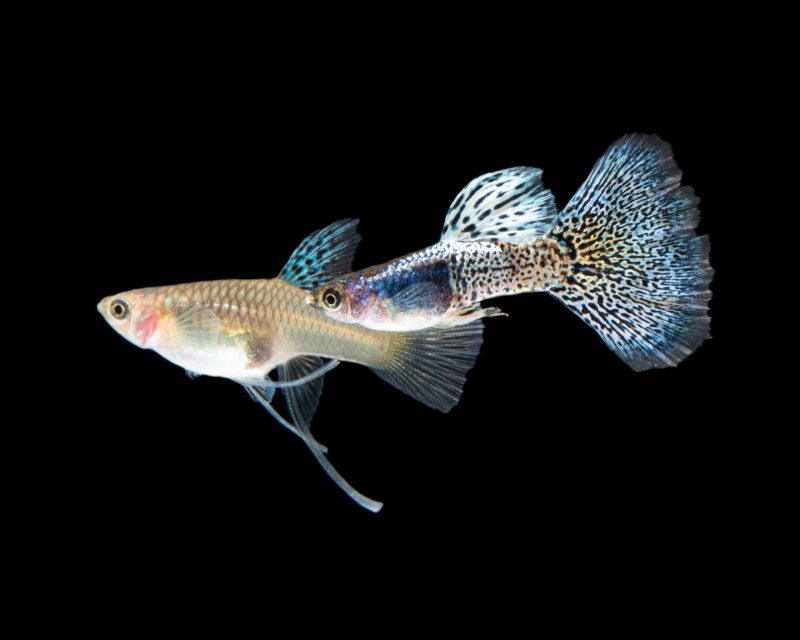
By name, Guppy Grass markets itself as a great tank mate for guppies. However, it is also suitable for small freshwater fish, dwarf shrimp, crabs, and crayfish. It is also good food for herbivores — there is a chance that they could kill off the najas grass, but it is so abundant that it should not be a problem.
Beneficiaries of Guppy Grass include:
- Amano shrimp
- Bamboo shrimp
- Blue Bolt shrimp
- Blue Tiger Shrimp
- Blue Velvet Shrimp
- Cardinal fish
- Celestial Pearl danios
- Cichlids
- Crystal Red Shrimp
- Ember tetra
- Ghost shrimp
- Goldfish
- Green fire tetra
- Japanese trapdoor snails
- Malawa shrimp
- Malaysian Trumpet snails
- Mystery snails
- Neon tetra
- Nerite snails
- Otocinclus Catfish
- Platies
- Plecos
- Pygmy Cory Catfish
- Ramshorn snails
- Red Cherry Shrimp
- Rosy barbs
- Silver dollars
- Snowball shrimp
- Vampire shrimp
Care and Maintenance
The best thing you can do for your tank and your Guppy Grass is to trim it regularly in order to control its growth. If growth is not controlled, all its algae controlling properties will disappear and it can start to choke other plants and also block light sources.
Additionally, you may not have room in your tank for too much growth, so clipping and pruning every week or two can thin out the dense plants and limit the growth of this lush aquatic plant.
Additionally, for the safety of the other aquarium inhabitants, make sure to quarantine Guppy Grass before adding it to your tank. Like any new additions, najas grass can carry parasites, pests, and predators that can endanger fish and other tank residents.
Although it’s possible to use pesticides to clean the Guppy Grass, that can be toxic to fish and invertebrates in your aquarium.
Potential Problems
Najas grass grows quickly and easily, so you need to make sure that you trim and prune regularly. Because Guppy Grass is so dense, it can also block light to other plants in the tank and to fish that require more light. Regular trimming can mitigate this problem.
Another issue is that the stems are fragile and will break easily. Watch for this because new side shoots will emerge from the breakage point and you will have more growth.
Finally, numerous aquarists complain of their Guppy Grass melting. Although it is a robust plant, it does take time for it to adapt to a new environment, so give it time to get accustomed to your tank and recover.
Growing (Controlling!) Guppy Grass
Growing Guppy Grass is less tricky than controlling the growth of Guppy Grass. It grows up and out, with side shooters popping out with no trouble. If you clip them, those clippings will also grow.
You could use clippings in another tank (if you are keeping a separate spawning tank for any of your fish, you could put clippings in there). You could also try to sell them or donate to your local fish or pet store, but if you don’t have use for them, make sure disposal of the clippings does not result in more growth. Uncontrolled propagation can clog waterways and create real problems.
Is Guppy Grass Suitable for your Aquarium?
Guppy Grass can do wonders for the aesthetic and health of your community aquarium. Despite the fact that it is considered an invasive species in many parts of the world, it is a great addition to your community tank.
One word of caution is that as you prune and control the growth of your najas grass, make sure to dispose of it by adding it to your compost bin, burying it, or even dissolving it in bleach — you want to make sure that it does not continue to grow and block waterways in your non-aquarium community.
We do not recommend using plastic bags for disposal because that is harmful to the environment. But aside from growth and disposal concerns, we highly recommend adding some Guppy Grass to your community aquarium. You and your fish will love it!
Do you love the guppy grass in your community tank? Let us know why in the comments below…

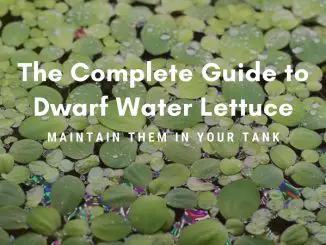
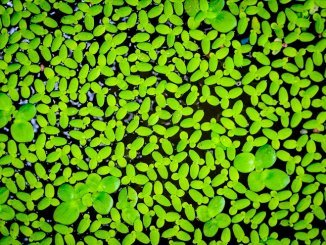
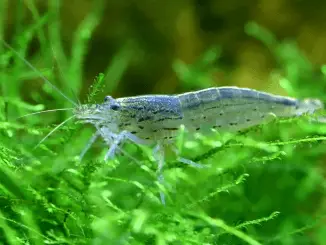
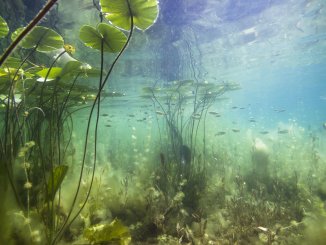
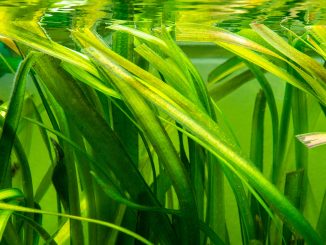
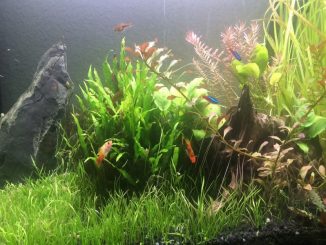
Be the first to comment